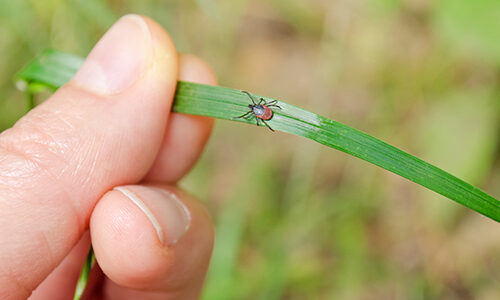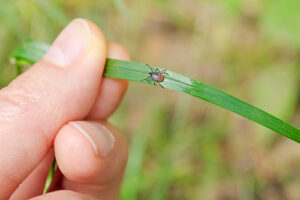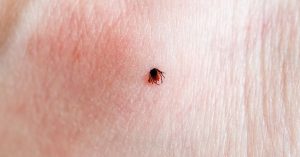Call for your appointment today 914-666-4665 | Mt. Kisco, New York

While the Powassan virus is considered rare, it can be dangerous and is fatal in 10% of the cases. In 2013, a Maine woman died from the disease and as of 2017, 10 residents had been infected.
An increase in cases of Powassan is particularly alarming, given that there is no medication to treat this infection, yet it can cause long-term neurologic problems. The virus can also be transmitted in as little as 15 minutes.

Now, a survey by Smith and colleagues examines the prevalence of B. burgdorferi (the causative agent of Lyme disease), B. miyamotoi, and the Powassan virus (POWV) among residents living in Maine. [1]
Using a tick identification database, the authors surveyed 230 individuals who had been bitten by Ixodes scapularis (deer ticks) or Ixodes cookei (woodchuck or groundhog) ticks between 2009 – 20013. Nearly all of the residents (99%) had been bitten by I. scapularis ticks.
Testing revealed:
- 13.9% of the people were positive for B. burgdorferi;
- 2.6% were positive for B. miyamotoi;
- 0.9% of the subjects were positive for B. burgdorferi and B. miyamotoi;
- 0.4% were positive for the Powassan encephalitis virus.
“Among residents of southern Maine with a history of I. scapularis tick bites,” the authors write, “the percentage who were seropositive for B. burgdorferi was 5 times greater than that for B. miyamotoi (13.9% vs. 2.6%) and 35 times greater than the percentage of deer ticks infected with POWV (0.4%).”
Although the number of I. scapularis ticks in Maine infected with the Powassan virus is low, frequent exposure to tick bites and the speed of transmission of the virus raises concerns, the authors write.
[bctt tweet=”Borrelia miyamotoi underdiagnosed in Maine, survey concludes.” username=”DrDanielCameron”]
Out of all the Borrelia spp. infections (n=1,854) reported in Maine in 2017, only 6 cases were attributed to B. miyamotoi. The majority were diagnosed as Lyme disease.
“On the basis of a seroprevalence of ≈2% in this study and that B. miyamotoi might be transmitted by all tick stages, we believe that this disease [B. miyamotoi] is underdiagnosed in Maine.”
Author’s Note: It is encouraging that researchers are learning more about emerging infections, including the Powassan virus. But it is also important for clinicians to not overlook treatable tick-borne diseases when assessing a patient.
(An adolescent from Poughkeepsie, NY, who had been diagnosed with Powassan virus and later died, was discovered post-mortem to have had Lyme carditis, a treatable tick-borne illness.)
Related Articles:
The best antibiotics to treat Borrelia miyamotoi?
Study finds tiny larval ticks can transmit Borrelia miyamotoi
References:
- Smith RP Jr, Elias SP, Cavanaugh CE, et al. Seroprevalence of Borrelia burgdorferi, B. miyamotoi, and Powassan Virus in Residents Bitten by Ixodes Ticks, Maine, USA. Emerg Infect Dis. 2019;25(4):804–807. doi:10.3201/eid2504.180202



